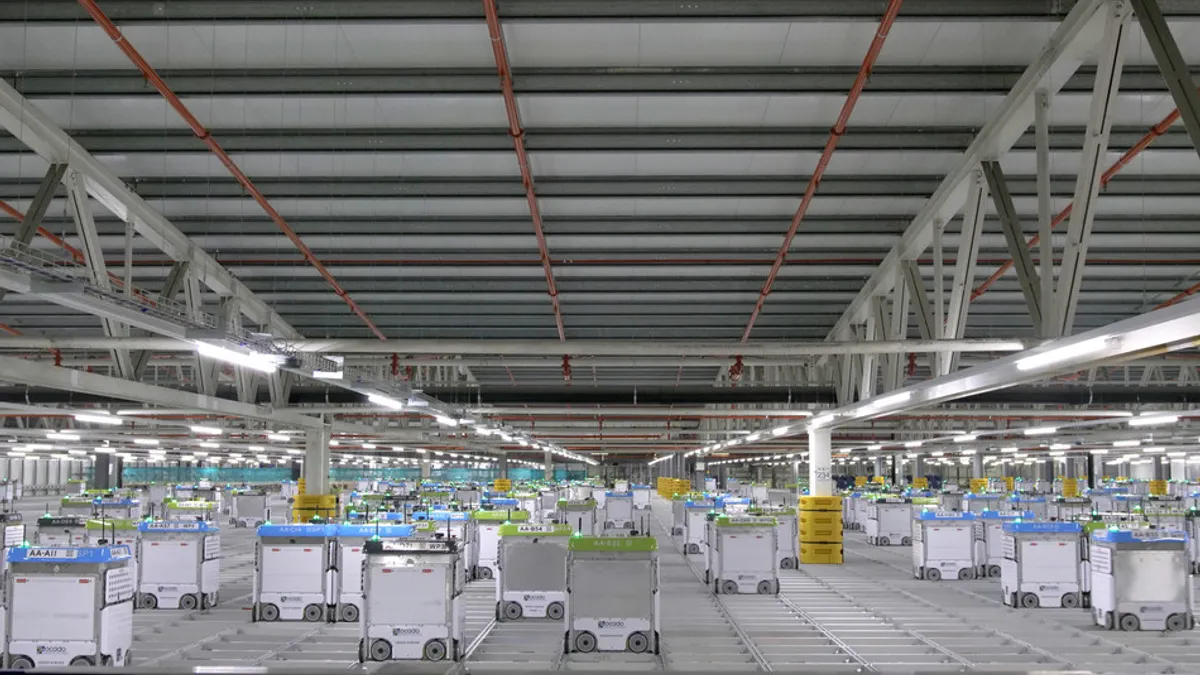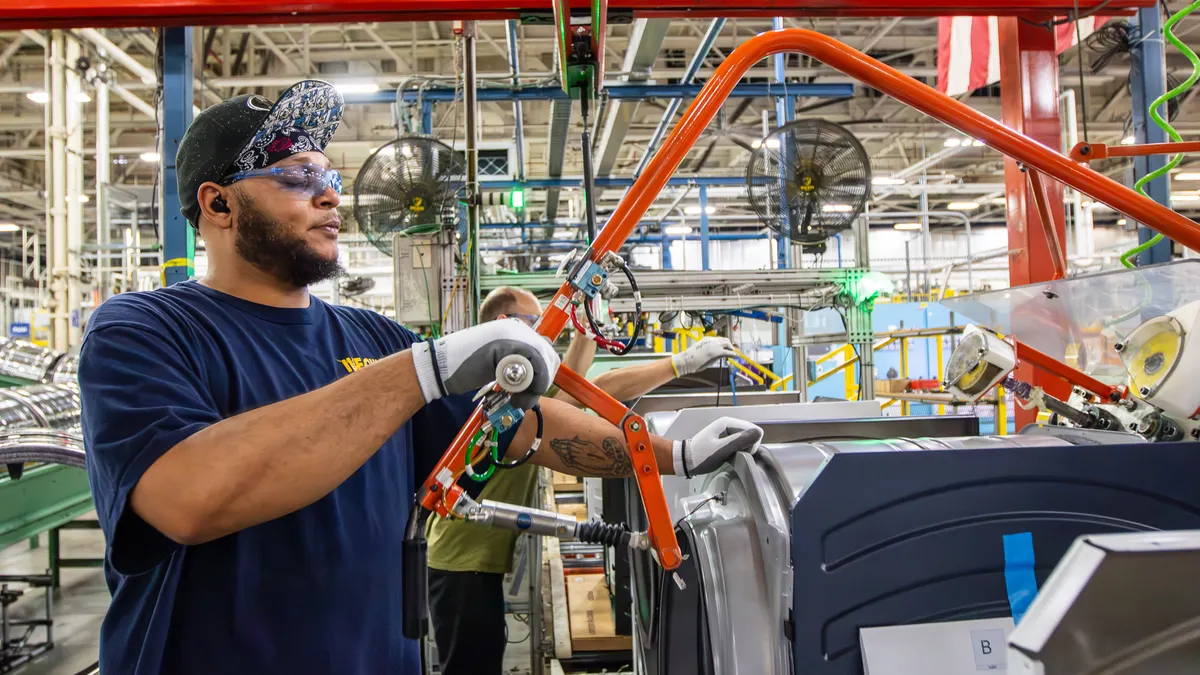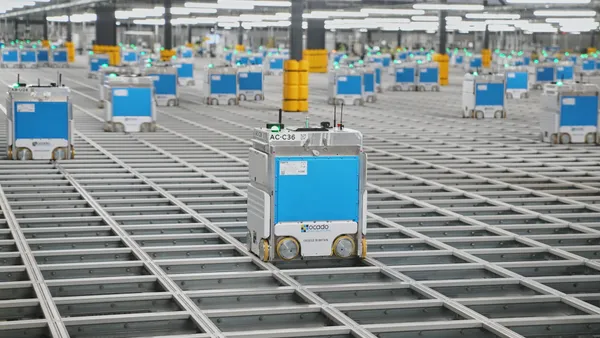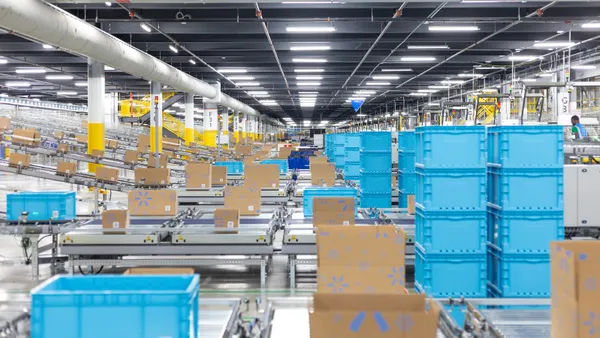This story is part of a MedTech Dive series examining the impact of the COVID-19 pandemic on the medtech industry, published six months after the U.S. declared a public health emergency. You can find the other stories here.
When some medtech companies cautioned in February of potential manufacturing challenges in China due to containment measures for the novel coronavirus, the warnings were among the first public red flags from the industry portending the massive scale of disruption that would unfold in the coming months.
Turmoil in Asia foretold much wider supply chain challenges to come, from attempting to surge manufacturing amid intense worldwide competition for resources, to moving product from place to place as standard travel shut down and modes of transport like air freight became much harder to secure.
Supply chains for personal protective equipment and diagnostic tests and their ancillary materials have inevitably been in the spotlight: everyone, everywhere needs them. For more typical medtech product lines, challenges include forecasting demand in a business environment that changes daily. Across the board, visibility into healthcare customers' real-time needs can be difficult to come by.
While COVID-19 is unmatched in its scale of disruption, the coronavirus is not the first major turbulence veteran medtech supply chain managers have experienced in recent years. Many cite 2017’s Hurricane Maria in Puerto Rico and the H1N1 flu outbreak in 2009 as events that helped prepare organizations to work through COVID-19.
Ultimately, the experience managing supply chains through 2020's spread of COVID-19 and beyond may provide a good business case for companies to further evolve their supply chain operations.
Below are four industry experts reflecting on their experiences this year with insights into what's helped and what's on their minds going forward.

Nelson’s company is a prime example of a medtech managing a level of demand for COVID-19 products (in BD’s case, diagnostic tests, analyzers and injection devices for forthcoming vaccines) likely unthinkable six months ago, while maintaining supply for its more standard device businesses (surgery, peripheral intervention, urology and critical care).
For Nelson and colleagues, focusing on relationships with suppliers has been key. They’ve gotten what they need, he said, “but it was slow.”
“Probably the main challenge is just growing capacity throughout the world with our supply base. As you go down into the lower tiers of suppliers too, we didn't have a relationship with them so we were contacting them for the first time, introducing ourselves and asking them to increase capacity by five times the norm.”
In the same way that financial analysts are wondering whether the medtech industry will see a sharp ‘V-shaped’ or a prolonged ‘U-shaped’ recovery, Nelson said his team is also analyzing how those different recovery scenarios would affect suppliers; the latter situation may mean high rates of absenteeism and longer financial hardship.
As one of the largest medtech companies, with $9 billion in 2019 revenue, BD is able to support and help stabilize smaller suppliers, setting them up with PPE and helping them apply for congressional Paycheck Protection Program loans to stay afloat, Nelson said. In some cases, BD also considers acquiring suppliers.

One key takeaway from earlier natural disasters and public health crises, and made apparent by the current pandemic, is the importance of stockpiling, said Calleja, who previously spent more than a decade working for AdvaMed. In this regard, it’s important that our memories are short, she noted.
The Strategic National Stockpile is a stopgap, Calleja said, and must be complemented by state-level stockpiling.
“It requires a real commitment to look at shoring up your manufacturing and I do think there's some really good discussion around incentives that we would strongly support,” Calleja said. “Live conversations” are happening regarding regulatory and financial incentives for stockpiling, including potential tax credits, she said.

Having product on hand is the name of the game in a pandemic situation, according to Meyer’s research in recent months with device companies.
“A lot of people will spend time saying, well medical device supply chains aren’t very sophisticated, right? They just rely on lots of finished goods inventory; they can get fat and lazy as a result,” Meyer said. “When you run into a disruptive event like COVID-19, lots of inventory is exactly what you need because you’re now somewhat buffered from transportation network disruption, or suppliers that can't produce because they can't get people into their buildings.”
Having safety stock, particularly as procedures are again on the rise, is critical. “In the medical device industry, the penalty for being wrong means that a patient doesn't get a procedure done,” Meyer noted, meaning that the cost of carrying incrementally more inventory beats the alternative.
Still, companies are trying to refine their demand forecasting and make it more frequent, given that many historical measures have gone out the window and visibility into customers’ real-time needs has been difficult to stay on top of.
“Monthly just doesn't work; things were happening so quickly and so unpredictably that the only way that they could hope to keep up was to shorten that cycle,” Meyer said of his research. “Universally companies were saying that they were trying to report on a weekly basis. In some very limited cases, as frequently as once a day or once every other day.”
Connected devices and on-the-ground sales teams are among the sources companies are leaning on to get more up-to-date insights, Meyer said.
“The silver lining for something like COVID-19 is the opportunity to take advantage and make a compelling business case to pursue ideas like digital technology or visibility or automation … because the entire business is aware of the disruption that the business felt."

“Like others, Edwards has throughout the pandemic been actively monitoring and mitigating known risks that could impact materials supply, manufacturing or product shipments. We also adjusted production, where necessary, to align with increased customer needs – for example, in critical care,” Bourne wrote in an email to MedTech Dive.
Bourne is among the medtech supply chain leaders who noted how the sharp and sudden decline in air travel had a huge impact on ease of product transport, and the value of having established relationships to get through tough situations.
For example, Edwards sources bovine pericardial tissue from Australian cattle for use in some of its heart devices. When nearly all commercial air travel was halted between Australia and the U.S. in April, successfully getting the cargo to a manufacturing site in time “highlighted the importance of rapid access to internal partners in government affairs, legal and regulatory, as well as the need for strong relationships with, for example, third-party logistics, suppliers and local governments," Bourne noted.
























